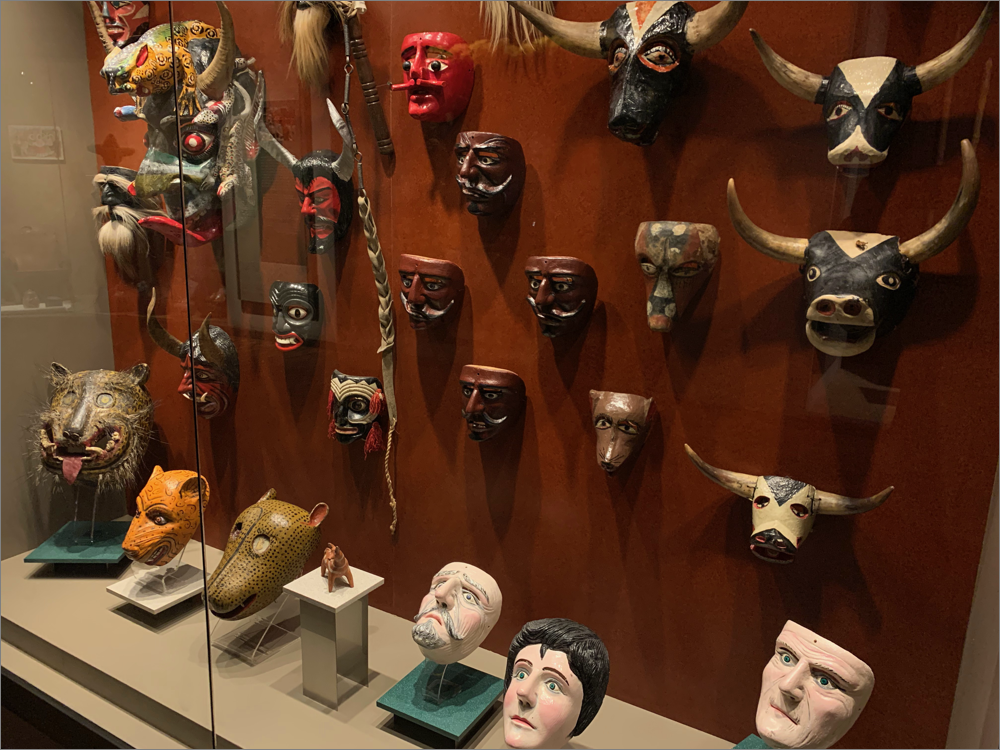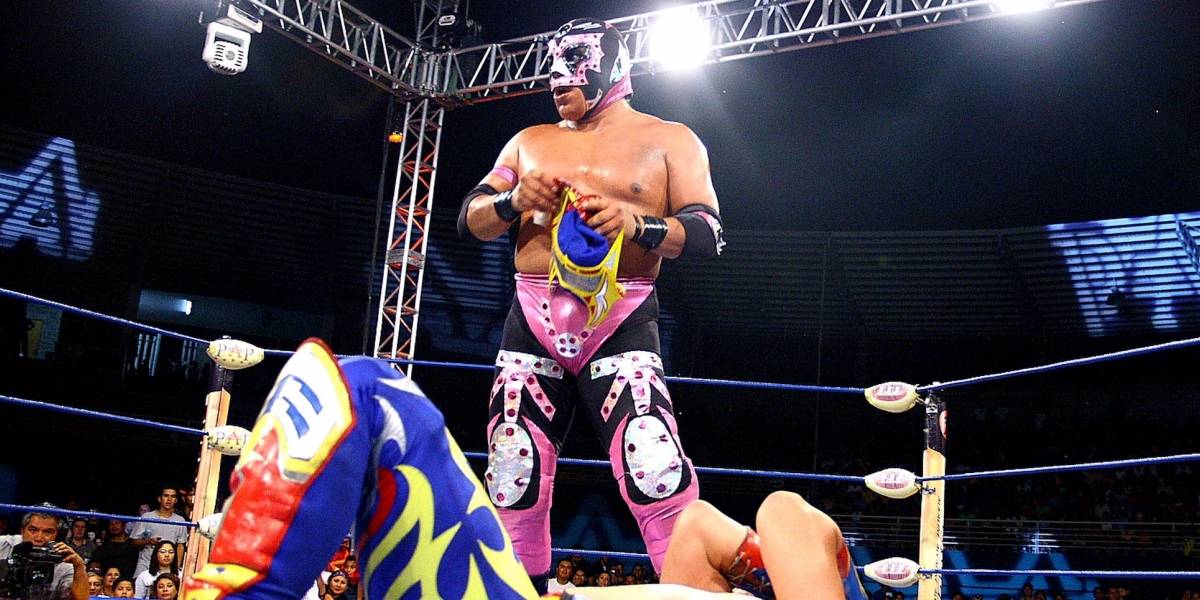The Meaning of Masks

Carnaval de la vida mexicana
The Carnaval de la vida mexicana is a four-panel mural housed at the Palace of Fine Arts in Mexico City. One of the most striking of the four panels is “La Dictadura” (The Dictator), with its cast of grotesqueries. All of them are wearing masks representing easily herded farm animals.
La Dictadura: “A disproportionate head that mixes features of Hitler, Mussolini, Roosevelt and Hirohito carries a flag in the colors of Germany, Italy, the United States and Japan. It is evident that Rivera wanted to denounce fascism, including that of his own country, embodied by ex-President Plutarco Elías Calles, the ‘Chief Máximo.’ He is surrounded by costumed figures of all kinds that dance in a crazy parade.”
Rivera affirmed: “In it, symbolic uniformed men, with faces like masks, charged against straw scarecrows while the street crowds obediently touched their rattles.”
Translated from Historia Arte: Carnaval de la vida mexicana See Also: Carnaval de la vida mexicana de Diego Rivera
The use of masks has a long history. The Northwest Coast artists use animal masks to invoke the spirit world. The Aztecs of Mexico had similar traditions. Below is an exhibit from the Anthropology Museum in Mexico City, showing the wide-range of alternate identities that masks make possible. Clearly, Rivera had a rich tradition to draw upon.

That includes, of course, the Lucha Libre, the professional wrestlers of Mexico. They are never to be found inside the ring without a mask. Their wrestling identities are designed to make them the polar-opposites of herd animals. And without the mask?

“When I put on the mask, I’m transformed. The mask gives me strength. The mask gives me fame. The mask is magical. When I remove the mask, I’m a normal human who can walk right by you, and not even get a “hello”. Usually with the mask on, everything is positive. Without the mask I’m a normal being who has his problems, who cries, who sometimes suffers. I could tell you that I really admire El Hijo del Santo. But do you know who I admire more ? The human being. Thanks to him, El Hijo del Santo has a life. And this human being sometimes sacrifices a lot to give this other identity life.“— El Hijo del Santo, Luchador